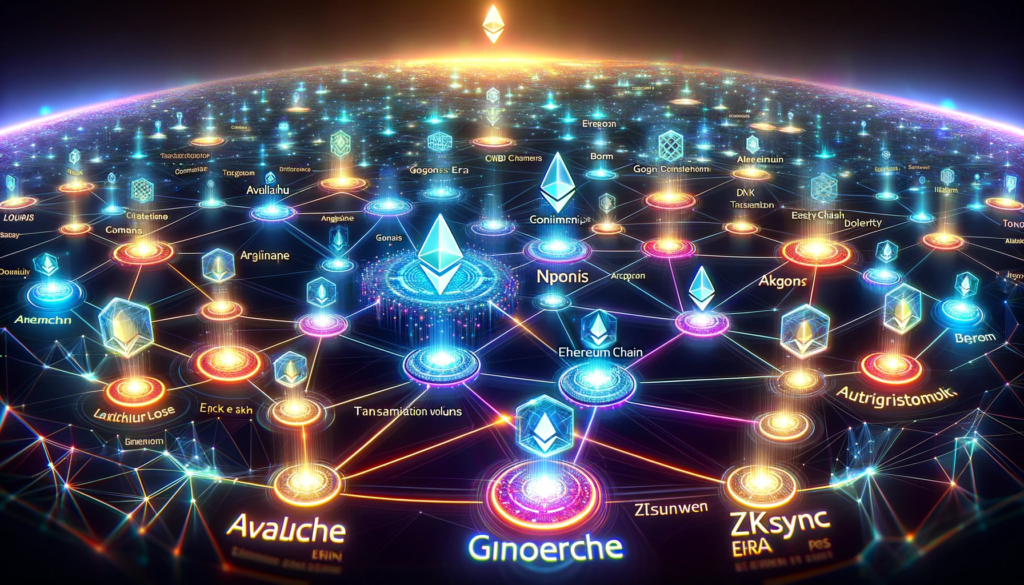Inscriptions are revolutionizing transactions across smart contract networks. These digital records have become a dominant force in the transaction volume of several major chains that are compatible with the Ethereum Virtual Machine (EVM).
Inscriptions’ Overwhelming Presence
In recent times, inscriptions have surged in popularity. For instance, in the past week, they represented over 91% of transactions on Avalanche, 75% on Gnosis, and significant percentages on other networks like Ethereum’s Goerli testnet, Arbitrum, ZkSync Era, BNB Chain, and Polygon PoS Chain. This data, sourced from Dune Analytics, highlights the growing influence of inscriptions in the blockchain world.
The rise in inscription activities has not been without challenges. Networks such as Arbitrum, Avalanche, ZkSync Era, Cronos, The Open Network, and Celestia have experienced outages, presumably due to the high volume of inscription transactions.
Financial Implications of Inscriptions
Inscriptions are also reshaping the economic landscape of these networks. A significant portion of transaction fees on platforms like Avalanche and ZkSync Era is now linked to inscription activities. This shift points towards a changing paradigm in how transaction fees are generated and distributed across these networks.
The NFT sector is witnessing a transformation due to inscriptions. The OKX NFT Marketplace, for example, has recently surpassed Blur in trade volume. This success is attributed to its adoption of Bitcoin Ordinals, a move that seems to resonate with the market, as evidenced by its substantial transaction volume.
The Evolution and Debate Surrounding Inscriptions
Initially, inscriptions emerged as a method to create NFT-like assets on Bitcoin. However, they quickly evolved and spread across EVM chains. This development has sparked a debate within the web3 community. While some see it as an innovative and cost-effective way to create NFTs, others criticize its speculative nature and its impact on network congestion.
Layer 1 networks like Near, Fantom, and Polygon have seen a surge in activity with the introduction of inscriptions, albeit accompanied by significant increases in transaction fees. This surge in activity has also led to congestion on the Bitcoin network, with a substantial rise in unconfirmed transactions.
Miner Reactions and Revenue from Inscriptions
The response to inscriptions has been varied, with some miners choosing to boycott them. However, studies from Glassnode show that inscriptions have become a notable source of revenue for miners, accounting for a substantial percentage of transaction fees this year.
The growing trend of inscriptions on EVM chains raises questions about their long-term impact on blockchain networks, especially concerning smart contract interactions and network congestion. As the landscape evolves, the community will continue to monitor these developments closely.












